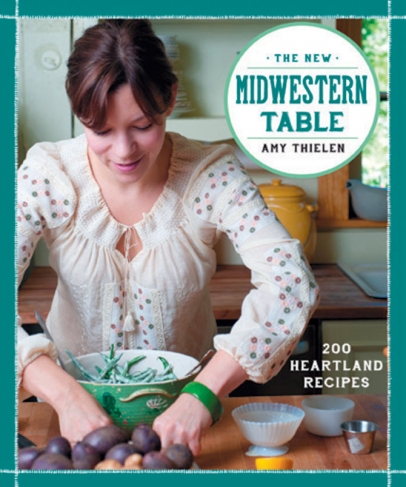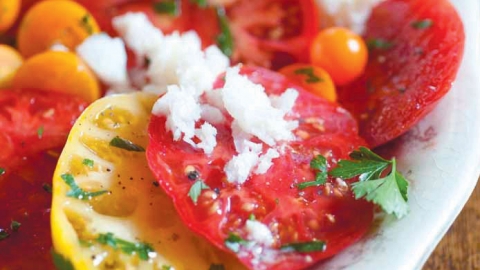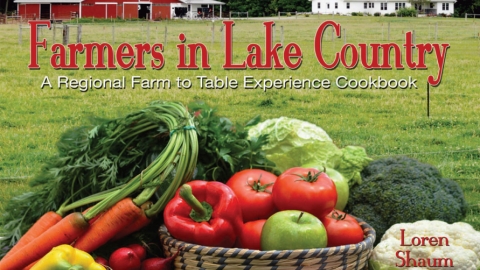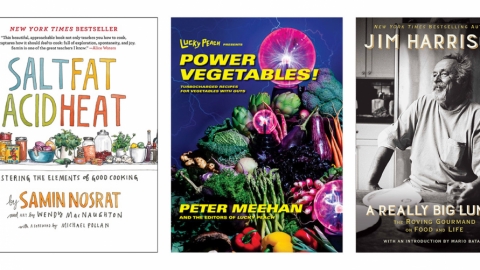Heartland Fare (excerpt from The New Midwestern Table)
The Midwest is home to a great tradition of American country cooking—food that’s rustic, gutsy and simple.
From meals sampled at friends’ and relatives’ tables across the region, it’s plain that generosity coexists with thrift, culminating in spreads laden with a profusion of unfancy, one-stroke dishes. The composition of a traditional plate generally goes like this: meat, starch, two vegetables and bread, followed by dessert.
By and large, we’re seasonal cooks—not just because it’s currently fashionable, but because in-season ingredients are less expensive, taste better and, in our staunchly four-season climate, are truly fleeting: When we come across wild berries, ducks, asparagus, pecans or cherished morel mushrooms, we snap them up. A lot of the best Midwestern food involves a very American intimacy with the wilderness, some hunting and gathering, a principle that counts even if some of the gathering occurs in your backyard, either from bushes you planted or the “volunteers” that have invaded: wild blackberries, black currants or grapes.
But how do we characterize Midwestern food? The answer is, I’m afraid, “not neatly.”
Michigander Jim Harrison, in Th e Raw and the Cooked, says about American food: “It is humorous to note that since we have no consistent tradition we are doomed to freedom”—a statement that may ring most true across the Great Plains. The willingness of this region’s people to embrace new foods in order to become a community of Americans is palpable here. When settlers were homesteading each rectangular 160-acre plot, they planted the seeds of their native countries in their gardens—paprika peppers for Hungarians, paste tomatoes for Italians—but a generation or two later, many of them were willing to shuck off cultural identifiers and embrace a common mean: few spices, few herbs, just fine raw materials, and maybe a can or two of cream of mushroom soup.
That said, among all kinds of Americans’ latent hungers for old-fashioned flavors have survived industrial food. And now, in an era of unprecedented foodie curiosity, those who had hidden their weakness for strong ethnic tastes are now free to bring this stuff out of the closet—which may explain why pickled fish, fresh horseradish, hot mustard, cured meats, fermented vegetables, strong cheeses and the like are all enjoying a resurgence.
And dominant flavors continue to shift. The current wave of immigrants, notably from Mexico, East Africa, Central America and Asia, is influencing Midwestern foodways just as strongly as the Scandinavians, Germans, Italians, Irish, Slovaks and many others did a few generations earlier. (The taquerías in small towns throughout Nebraska are a magnificent case in point; the Hmong food markets in St. Paul, Minnesota, another.)
In rural areas like mine in northern Minnesota, there’s also influence from the nearby native tribes, cultures whose cuisine was, and is, reflective of the food that thrives here. A survey of Two Inlets Township’s early homesteaders reveals a diet not dissimilar to the local Ojibwe one: high in freshwater fish, wild rice, wild game and berries, in addition to the crops and animals they raised.
Everyone who has lived here may have dropped their own seeds in the ground. But they’ve also pulled up the same fi sh, hunted the same game and harvested the same mushrooms, fruits, roots and tree syrups. Like stakes driven into the ground of this vast food culture, these ingredients start to define what this place tastes like. Between what people have brought and what grows naturally in the Midwest, the food of this region has gradually developed into a voluminous cuisine of its own.
Even though the region is dotted with great restaurants, you can’t judge Midwestern cuisine entirely on its public face. As is the case with other rural foodways, our most iconic dishes get passed hand-to-hand around a kitchen table. The roots of our cooking remain behind closed doors, where the old ways of preparing food—gardening, preserving, fishing, hunting and otherwise plucking good things from the woods or the fields—are not only still alive, but enjoying a transformative, active present tense.
—Adapted from The New Midwestern Table.










